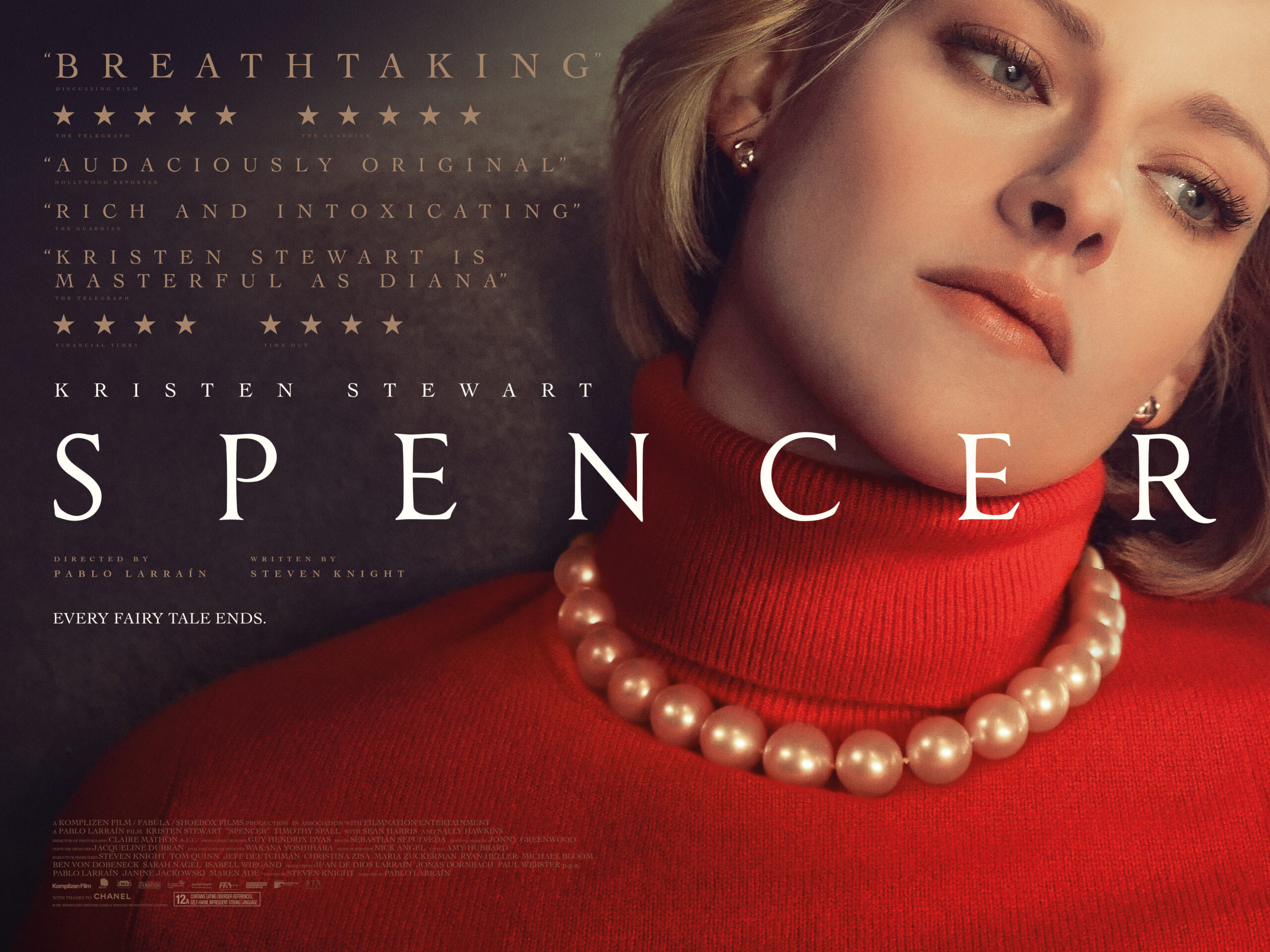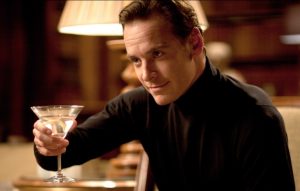
A POWERFUL (YET FLAWED)
CHARACTER STUDY
Over the last century, the Windsor British royal family has become one of the most famous and influential European monarchies; enduring the changing of political climate and the advancement of society, while always showing the real mystique and alluring nature of royalty of sovereign nation. The story of Diana Spencer, the once Princess of Wales, is one of that offers fascination and a cautionary tale for all, within dealing with such a powerful royal family. While her life story has been well-documented throughout history; showcasing Diana’s upbringings, her marriage / divorce to Prince Charles, her humanitarian work, and her parental roles as a mother to the future kings of England, Harry, but her fashionable title of the “People’s Princess” also examines a darker side; one that is marred by expectations of being a member of the Windsor royal family and the painful tragedy of a unlove marriage. Given the guarded nature of her life and her tragic death in 1997, the perplexity and mystery surrounding Diana Spencer has enthralled, engaged, and mystifies many, speculating the painful tale that isn’t shown towards the public. Hollywood hasn’t fully divulged such events that had taking place in Diana’s life, with only a handful of project such as the 2006 film The Queen and Netflix’s TV series The Crown to give a cinematic representation to who Diana was (and those surrounded her situation). Now, Neon and Topic Studios and director Pablo Larrain present the film that examines a glimpse into Diana’s life with the release of Spencer. Does the movie offer a small window into the famed “People’s Princess” or does it completely miss it’s mark on showcasing Diana’s life?

THE STORY
In December of 1991, England’s Royal Family is gathering for a Christmas celebration at Queen Elizabeth’s (Stella Gonet) Sandringham Estate residence. While her son, Prince Charles (Jack Farthing), gears up to play the part of the heir apparent to Britain, his wife, Princess Diana (Kristen Stewart), has lost the energy to keep up appearances. The overwhelming nature of her role as the Princess of Wales, Diana longs for her freedom, unable to keep weary and trouble thoughts out of her head, while also treasuring time with her personal dresser and confidant, Maggie (Sally Hawkins). Struggling to find merriment in the traditions of yuletide festivities, Diana clings to the presences of her sons, William (Jack Nielen) and Harry (Freddie Spry), which brings comfort to the young princess, but the pressures of the public eye and of her attachment to family in-laws provides to be quite profound and detrimental to her mental health. Fighting to maintain her composure with photographers and the Queen’s orders, Diana finds herself at a crossroads….one that will either make or break the young Princess of Wales.

THE GOOD / THE BAD
I do have to say that I am quite fascinated with England’s royals. Not so much on the recent stuff that has happened in the last few years (not interested in the drama of Harry and Meghan), but all the history before that particular point is quite intriguing to me. Queen Elizabeth has certainly seeing a lot, done a lot, and endure the changing of times throughout history. Yet, the story of Princess Diana is one that has always stuck with me for quite some time. It really is an interesting (almost cautionary) tale to fully examine; showcasing the tragic life of Diana Spencer, who went on to become a such a famous princess from one of the most powerful (and widely publicized) royal monarchy family and shows such a painful life. As mentioned, the story of Diana has been thoroughly examined by many; finding that it is a combination of her inexperience of performing the duties of princess royal, the uncoupling of her relationship with Princes Charles, and how the media intruded a lot in her life. That’s not to say that Princess Diana wasn’t beloved by many as she was with her being the “People’s Princess” to all around the world, her humanitarian work, and being quite comforting to both her two children. However, her death overshadowed that, with her life ending in such a tragic way; one that has certainly shook (including myself) when it happened. The death of Diana (and her life) also shook up the establishment of England’s royal family; placing a heavier scrutiny on the monarchy and how the handle such situations. Whatever you take away from Princess Diana of Wales’s life, one constant is that she left her mark on Britain and…. the world.
Naturally, this brings me back around to talking about Spencer, a 2021 biographical film of the late Princess Diana of Wales. As mentioned, the story of Diana Spencer is certainly ripe for cinematic treatment, so it came at no surprise (to me at least) when it was announced that a movie studio was going to be down a bio-pic drama on the late princess. I, for one, was quite interested to see what the film was going to present of Diana’s life…. something all-encompass (i.e., from birth to death) or made just something a small, yet important part of her life to focus on. After that initial announcement, I remember hearing that actress Kristen Stewart was attached to the project and that she would be playing the lead role as Diana Spencer. I was a bit off-put by that as I’m not the biggest fan of Stewart since her Twilight days. However, I do have to admit that she has certainly improved in her acting ability and seems to be one of the better acting talents of the main cast of Twilight that has risen to stardom in Hollywood. Of course, the film’s movie trailers showcased that promise; previewing Stewart as Diana in a favorable light in portraying the tragic life of princess. So, I was looking forward to seeing Spencer when it came out during November 2021. However, I didn’t get the chance to see the movie in the theaters (my schedule got too busy), but I was able to catch Spencer when it came to digital release in December (boy, that was quick). So…. what did I think of this biopic of Princess Di? Well, it was okay. Despite a very strong performance from Stewart and fairly interesting personal glimpse into some of Diana’s most critical moments, Spencer is a somewhat shallow film that lacks substance and hinges on nuances more than anything else. There is some insightful / cinematics into the feature, but it isn’t quite the “cinematic gold” that some are making it out to be.
Spencer is directed by Pablo Larrain, whose previous directorial works include such films as The Club, Neruda, and Jackie. Given his background, Larrain makes for a suitable choice in helming such a project like this. Perhaps the most intriguing aspect of which Larrain does with Spencer is the same way of how he approaches the film as a whole. Much like what he did with Jackie, Larrain shapes Spencer to be a defining moment for the female protagonist character role; focusing on pivotal moment in Diana’s life, where her life (both public and private) is standing upon an edge of a knife; one that could “make or break” the young princess of Wales. Given all that happens throughout Diana’s life (both before and after these events depicted in the film), Larrain decision to focus on this particular moment of her life is quite interesting and certainly has enough gumption to make such a motion picture. While I do have some problems with the feature’s substance and narrative progression plot points in the film (more on that below), I felt that the focused pin point of a story surrounding Diana’s time at the Sandringham estate during the holidays with Britain’s royal family is one that gives some dramatic flair; one that is matched equally with Diana’s frustration and royal traditions. In a more interesting way, if one goes deeper into the movie’s story presentation, Spencer isn’t solely focused on the events of Diana’s life. What do I mean? Well, the film itself isn’t about the “life and times” of Diana. Thus, the movie isn’t about her as a princess, or her humanitarian efforts, and only briefly mentions the relationship she has with the royal family. Basically, Larrain makes Spencer about a female, who is fragile and fractured state of mind, weighs heavily on her and how she interacts with everyone. There is a sublime almost saddened feeling while watching this film, with Larrain portraying the loneliness and isolation of Diana and how she tries to overcome the various things that stands before her. In the end, while there are some things that I think could’ve been done better, I think that Larrain does make Spencer have a good character study feeling of examining the struggle that Diana faces….both in public eye and personal demons.

The presentation of Spencer is pretty good in a few areas and a few waning in others. As for the positives, I think that the film’s overall “look and feel” (from a visual perspective) definitely matches the overall tone of the feature. And what I mean by that is…. Larrain, much like how he wants to portray the character of Diana Spencer, projects the film’s background / setting aesthetics to mirror the plight of the young princess’s struggles. How so? Well, everything (setting-wise) in the movie has that regal look; one that is grace with elegance and poise that is befitting England’s royal family…..and yet…. everything has that muted color….as if worn down by time and dulled to the touch. Thus, the juxtaposition of those two aspects is carefully managed throughout Spencer. Additionally, what definitely does make a striking appearance in the film is the various costumes and wardrobe attires that Diana wears throughout the film, which definitely reflects the lavishing outfits that the real Diana Spencer wore during her time. Thus, the various “behind the scenes” members, including Ralf Schreck and Stefan Speth (art direction), Guy Hendrix Dyas (production designs), Yesim Zolan (set decorations), and Jacqueline Durran (costume designs) should be commended for their efforts on the movie.
Additionally, I thought that the cinematography work by Claire Mathon is decent and definitely flavor to the feature’s proceedings. As mentioned, the whole movie is presented with a sort of “muted” color and I think that Mathon’s work aides in that endeavor, with camera angles and wide lens framework to make the film’s landscape beautiful yet desolate, ornate yet dull, and regal yet cold. Lastly, while I usually like movie soundtracks and usually praise the composition pieces that are provided for the film, I do have to say that I was a bit unimpressed with Spencer’s score, which was composed by Jonny Greenwood. The score for the feature seems a bit too “arthouse-y” for me and comes off as a weak composition. Some elements of the music work, but I wasn’t too fond of Greenwood’s score. Plus, I thought that the heavy usage of jazz-esque style music was a bit wonky and didn’t fit the movie. Altogether, I was disappointed with the score for Spencer.
Problems do quickly show up in the movie that hold Spencer back from being something truly interesting and cinematically brilliant. Perhaps the one that is the most prevalent throughout the feature is in the screenplay, which was penned by Steven Knight, and where it goes with many of its avenues it tries to explore. While I do praise the script for focusing on a particular moment in Diana’s life, I felt that the feature’s narrative struggles to find a proper balance of storytelling and character growth. What do I mean? Well, majority of Spencer is spent on Diana and, while the movie is heavily focused on her in a somewhat character study, there seems to be something greatly lacking throughout the feature. Yes, I fully understand that the movie is to be solely on Diana, but I think that the movie’s script seems to be a bit undercooked; sacrificing a lot of secondary characters as well as storytelling beats. Basically, the movie is quite the slow burner and I think that Larrain struggles to make for an engaging endeavor, for there are cracks throughout the movie that seem too distracting to make a fully realized tale of what is being told about Diana’s time at Sandringham during the holidays. Thus, the context for Spencer, while important and thought provoking, comes off as a bit boring with several pacing issues that are scattered throughout the feature. Personally, I felt that the film could’ve benefitted from having more substance added to the story being told, which could’ve included various other characters as well as help explain certain things that the character of Diana is going through.
In addition, the movie also relies too heavily on the various artistic flourishes that permeates the entire production. Much like how Jackie was, Larrain definitely has a “arthouse” approach with his filmmaking style, which is clearly displayed “front and center” in Spencer. This includes a lot of elongated camera shots, lingering sequences, confusing / ambiguous scenes, and moments that are left a bit of a “head scratcher”. I sort of knew that the movie was going to be a little bit like this, but these “arthouse” nuances sort of took me out of the movie as if Larrain is making the feature for a final exam project for a college filmmaking course. I know that it might not bother some, but these flourishes seem a bit much (in my opinion); making the film more of a slight oddity than anything else. Of course, 2021 has seeing plenty of bizarre “arthouse” movies take center stage and get praise for the different strokes of cinematic storytelling (i.e., The Green Knight, Lamb, The French Exit, etc.), but I think that Spencer seems a bit “too much” when trying to project the arthouse feeling and filmmaking aesthetics that it comes off as too straining.
As a minor point of criticism, I found it a bit odd that the movie doesn’t mention the name of Camilla Parker Bowles; only referring to her as “her”. Yes, it is quite commonly known that Princes Charles had an affair with Camilla, who (after divorcing Diana) married her, but it’s a bit peculiar that the movie doesn’t mention her by name. Thus, though she is not physically in the movie, there’s a lot of moments that “her” is referring to Camilla and it just seems a bit offputting….as if they (the filmmakers) were not allowed to say “Camilla” in Spencer. I know that seems like a minor gripe, but it’s just my opinion.

The cast in Spencer is relatively good and, while I think that are a fairly good selection, most get somewhat sacrificed; pushed aside with the movie giving more screen-time for protagonist character of Diana Spencer to shine. This, of course, means that the lead role for Spencer gets the most grit and most character built most throughout the entire cast of characters, with Larrain focusing the camera lens on the subject matter of who Diana is. It is because of this that actress Kristen Stewart does actually shine brightly in the movie as Diana Spencer. Known for her roles in the Twilight saga as well as Snow White and the Huntsman and Seberg, Stewart has certainly made a name of herself since she first appeared in Hollywood, and I do have to say that her performance in Spencer is probably her best yet. There’s no denying the simple fact that Stewart does give her all in trying to portray the famous princess of Wales on-screen, without straining or going “over the top” in her performances (something that many could easily do in depicting her madness). Stewart demonstrates the personal struggle of Diana throughout the entire film; showcasing the anxiety, the indecisions, the off-kilter moods, the quiet comforts, and the overall fracture mindset that Diana must have felt throughout her time with the England’s royal family; one that is heavily viewed with eyes of scrutiny everywhere. Much like what actress Natalie Portman did with Jackie Kennedy in Jackie, Larrain makes Spencer a cinematic vehicle for Stewart to control throughout the entire film; placing a large emphasis on the character, with Stewart up to challenge and equally matching it with her talents. You definitely can feel her emotions in almost every scene she’s in and this is convey in her various sequences; projecting elations, frustration, sadness, and moments of joy with realistic feeling; offering a possible glimpses as to what level of fragile state of mind that the real Diana was facing. In the end, whether you like her or not as an actress, there is no denying the fact that Stewart did a fantastic job in the role of Diana; one that is probably her defining character role in her career.
Beyond Stewart’s performance, there are several additional characters that hold the spotlight in the movie as supporting players to the feature, yet their characters themselves are fully strong enough…. merely lending their weight in bolstering Diana’s character throughout the feature. This, of course, means that these characters have little growth in the film and are simply there to help strengthen Diana’s plight throughout. Who actually does this is the most is in the character of Maggie, the royal dresser for Diana and who is played by actress Sally Hawkins (The Shape of Water and Paddington). The on-screen chemistry between Hawkins’s Maggie and Stewart’s Diana is felt immediately and, while Hawkins’s screen is limited, the actress does bring a subtle comfort to the manic tensions that the princess of Wales is going through. Additionally, actors Sean Harris (Harry Brown and Mission Impossible: Rogue Nation) and Timothy Spall (Mr. Turner and Vanilla Sky) give solid performances in their respective roles as the royal head chef Darren McGrady and Equerry Major Alistair Gregory (who is based on retired RAF officer David Walker). Both Harris and Spall showcase their acting talents well whenever on-screen, especially when interacting with Stewart’s Diana, but they themselves are regulated to thinly sketched supporting players (again, only there to help bolster the lead role in various scenes). As a sidenote, I think that young actors Jack Nielen and Freddie Spry (both of whom make their acting debut with Spencer) do good job in their respective roles of Diana’s two children, William and Harry. As expected, Williams gets to shine a bit more than Harry, which shows in Nielen’s performance.
Unfortunately, the rest of the cast, including actor Jack Farthing (Poldark and Blandings) as Prince Charles, actress Stella Gonet (How I Live Now and The House of Elliot) as Queen Elizabeth II, actor Richard Sammel (Casino Royale and Inglorious Basterds) as Prince Philip, and actress Elizabeth Berrington (Last Night in Soho and In Bruges) as Princess Anne are pushed aside and are merely “window dressing” in the feature…. having little screen time in Spencer. Of course, I do understand that Larrain wanted to make the feature have a stronger focus on Diana, which is understandable, but the more secondary characters are severely (almost woefully) underdeveloped, especially those concerning Diana’s husband (Charles) and her mother in-law (Queen Elizabeth II), who I thought would have more substance / screen time in the movie. Kind of disappointed in that regard.

FINAL THOUGHTS
During her royal holiday visit to the Sandringham Estate, Diana Spencer finds herself at crossroads with her life; one that could make or break the young princess of Wales with the release of Spencer. Director Pablo Larrain’s latest film takes a new (and interesting) look into the life of the late of Princess Diana; offering up a tale of a fracture woman, who is scared and haunted by her own demons and those around her with an insurmountable fear. While the intentions are sincere, the themes are palpable, and a great performance from Stewart in the lead role, the movie does struggle to find a proper balance, especially considering its sluggish balancing, its arthouse nuances, and lacking substance throughout. Personally, I thought that this movie was good, but not great. I definitely get where they are going with this feature (story and character and all) and, while it is moving and thought provoking, I felt that the hype for the movie doesn’t match what’s actually presented. Basically, it’s definitely an “Oscar bait” film….and that can be a good or bad thing. Personally, I thought that Jackie was better than this movie. Thus, my recommendation for the movie is a “iffy choice” as some will probably like it a lot, while others will probably not find the feature’s narrative to their liking, In the end, while the story of Diana will continue to be fascinated subject to dive into and fully examine, Spencer gives a glimpse into the late Princess of Wales; one that showcases a fragile woman’s life in a world of tradition and scrutiny, yet presented in a cinematic light with a bit too much arthouse flourishes.





